Indian Prime Minister Narendra Modi celebrated Raksha Bandhan on Saturday at his official residence in Delhi.

Indian Prime Minister Narendra Modi celebrated Raksha Bandhan on Saturday at his official residence in Delhi.
Children and members of the Brahma Kumari spiritual organization tied rakhis on his wrist, marking the occasion with warmth and tradition. Earlier in the day, Prime Minister Modi posted on social media, extending his best wishes and highlighting the festival’s importance in strengthening sibling bonds. On this day, sisters tie a rakhi on their brothers’ wrists, and in return, brothers offer gifts as a symbol of love and care.
mitv
Indian Prime Minister Narendra Modi celebrated Raksha Bandhan on Saturday at his official residence in Delhi.
Children and members of the Brahma Kumari spiritual organization tied rakhis on his wrist, marking the occasion with warmth and tradition. Earlier in the day, Prime Minister Modi posted on social media, extending his best wishes and highlighting the festival’s importance in strengthening sibling bonds. On this day, sisters tie a rakhi on their brothers’ wrists, and in return, brothers offer gifts as a symbol of love and care.
mitv
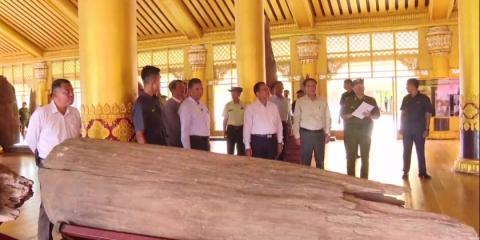
Chairman of the State Security and Peace Commission Senior General Min Aung Hlaing visited Bago's historic Kanbawzathadi Palace on Sunday to inspect ongoing cultural heritage preservation work.
The Senior General reviewed the restored sections, including replica royal halls from ancient Myanmar dynasties, traditional artifacts, and historical photos. The Senior General emphasized the need for systematic conservation, using modern technology to preserve the nation’s rich history for future generations.
Chairman of the State Security and Peace Commission Senior General Min Aung Hlaing visited Bago's historic Kanbawzathadi Palace on Sunday to inspect ongoing cultural heritage preservation work.
The Senior General reviewed the restored sections, including replica royal halls from ancient Myanmar dynasties, traditional artifacts, and historical photos. The Senior General emphasized the need for systematic conservation, using modern technology to preserve the nation’s rich history for future generations.
They also viewed the reconstruction of royal carriage, once used by King Bayintnaung, and Theinni Gate area, where ancient city walls and moats are under preservation. He instructed officials to maintain cleanliness and beauty of the palace grounds, to revive and protect the ancient Hanthawaddy city site and fortifications, to improve visitor spaces and restore nearby Bago River banks, using stone reinforcements for proper water flow.
Kanbawzathadi Palace, originally built in 1553 by King Bayintnaung, was destroyed in the late 1500s. It was rediscovered and excavated between 1990 and 1997, with several royal buildings now reconstructed based on archaeological evidence. The site is now a popular destination for local and international visitors.
mitv
Chairman of the State Security and Peace Commission Senior General Min Aung Hlaing visited Bago's historic Kanbawzathadi Palace on Sunday to inspect ongoing cultural heritage preservation work.
The Senior General reviewed the restored sections, including replica royal halls from ancient Myanmar dynasties, traditional artifacts, and historical photos. The Senior General emphasized the need for systematic conservation, using modern technology to preserve the nation’s rich history for future generations.
They also viewed the reconstruction of royal carriage, once used by King Bayintnaung, and Theinni Gate area, where ancient city walls and moats are under preservation. He instructed officials to maintain cleanliness and beauty of the palace grounds, to revive and protect the ancient Hanthawaddy city site and fortifications, to improve visitor spaces and restore nearby Bago River banks, using stone reinforcements for proper water flow.
Kanbawzathadi Palace, originally built in 1553 by King Bayintnaung, was destroyed in the late 1500s. It was rediscovered and excavated between 1990 and 1997, with several royal buildings now reconstructed based on archaeological evidence. The site is now a popular destination for local and international visitors.
mitv
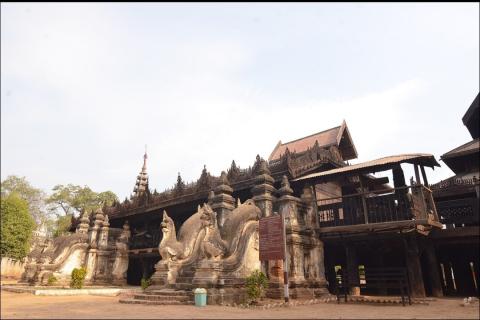
Monasteries with significant masterpieces of wood carvings, illustrating 550 Jataka stories and Dhammapada verses and stories, are called Yokesone monasteries.
There are many ancient Yokesone monasteries in Myanmar. Of them, Mandalay Shweinpin Yokesone Monastery, Sagaing Yokesone Monastery, Salin Yokesone Monastery and Panpu Yokesone Monastery in Salay and Sagu’s three-storey Yokesone Monastery, Hmankin Yokesone Monastery in Minbu (Sagu) Township and Lekaing Monastery located between Sagu and Pwintbyu are the most famous places.
Monasteries with significant masterpieces of wood carvings, illustrating 550 Jataka stories and Dhammapada verses and stories, are called Yokesone monasteries.
There are many ancient Yokesone monasteries in Myanmar. Of them, Mandalay Shweinpin Yokesone Monastery, Sagaing Yokesone Monastery, Salin Yokesone Monastery and Panpu Yokesone Monastery in Salay and Sagu’s three-storey Yokesone Monastery, Hmankin Yokesone Monastery in Minbu (Sagu) Township and Lekaing Monastery located between Sagu and Pwintbyu are the most famous places.
Some Yokesone monasteries have been preserved and carefully restored by the Department of Archaeology and National Museum, maintaining the original structure. The visitors can observe intricate wood carvings depicting the tales, and its exterior is adorned with detailed carvings.
Yokesone monasteries are cultural hubs and architectural landmarks with symbolism. Monasteries representing cultural fusion of late Konbaung Dynasty, Inwa, Amarapura and Yadanabon eras. Those ancient monasteries are preserved through generations for historical and architectural significance. Those magnificently decorated sculptural monasteries are preserved for future generations to showcase Myanmar’s exquisite artistic heritage to homegrown visitors and tourists. – Zayar Naing (Shwekanmyay)/KK
GNLM
Monasteries with significant masterpieces of wood carvings, illustrating 550 Jataka stories and Dhammapada verses and stories, are called Yokesone monasteries.
There are many ancient Yokesone monasteries in Myanmar. Of them, Mandalay Shweinpin Yokesone Monastery, Sagaing Yokesone Monastery, Salin Yokesone Monastery and Panpu Yokesone Monastery in Salay and Sagu’s three-storey Yokesone Monastery, Hmankin Yokesone Monastery in Minbu (Sagu) Township and Lekaing Monastery located between Sagu and Pwintbyu are the most famous places.
Some Yokesone monasteries have been preserved and carefully restored by the Department of Archaeology and National Museum, maintaining the original structure. The visitors can observe intricate wood carvings depicting the tales, and its exterior is adorned with detailed carvings.
Yokesone monasteries are cultural hubs and architectural landmarks with symbolism. Monasteries representing cultural fusion of late Konbaung Dynasty, Inwa, Amarapura and Yadanabon eras. Those ancient monasteries are preserved through generations for historical and architectural significance. Those magnificently decorated sculptural monasteries are preserved for future generations to showcase Myanmar’s exquisite artistic heritage to homegrown visitors and tourists. – Zayar Naing (Shwekanmyay)/KK
GNLM
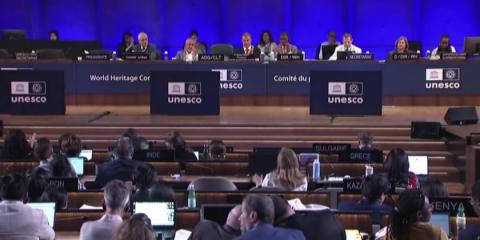
The UNESCO World Heritage Committee which decides on the listing of world heritage sites will hold its meeting in Busan in July 2026. South Korea was selected as the host of its 48th annual gathering, during a meeting in Paris on Tuesday.
The UNESCO World Heritage Committee which decides on the listing of world heritage sites will hold its meeting in Busan in July 2026. South Korea was selected as the host of its 48th annual gathering, during a meeting in Paris on Tuesday.
The South Korean government, earlier through a public contest, finalized Busan as its candidate city. The UNESCO World Heritage Committee is a global conference discussing designation and preservation of world heritage sites that are deemed to have exceptional universal value that merits protection for all humanity.
mitv
The UNESCO World Heritage Committee which decides on the listing of world heritage sites will hold its meeting in Busan in July 2026. South Korea was selected as the host of its 48th annual gathering, during a meeting in Paris on Tuesday.
The South Korean government, earlier through a public contest, finalized Busan as its candidate city. The UNESCO World Heritage Committee is a global conference discussing designation and preservation of world heritage sites that are deemed to have exceptional universal value that merits protection for all humanity.
mitv
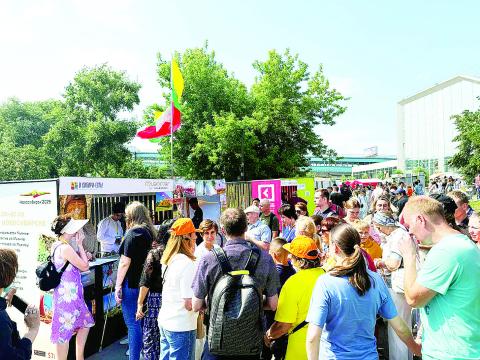
At the “In Siberia – THERE is!” Gastronomic and Tourism Fair held in Novosibirsk, the Russian Federation, from 11 to 13 July, the Myanmar tourism promotion booth, representing the Ministry of Hotels and Tourism, attracted significant interest from Russians and locals of Novosibirsk, drawing a large number of visitors and creating a lively atmosphere.
The visitors to the Myanmar tourism promotion booth showed great interest in the country’s travel destinations and tourist attractions.
At the “In Siberia – THERE is!” Gastronomic and Tourism Fair held in Novosibirsk, the Russian Federation, from 11 to 13 July, the Myanmar tourism promotion booth, representing the Ministry of Hotels and Tourism, attracted significant interest from Russians and locals of Novosibirsk, drawing a large number of visitors and creating a lively atmosphere.
The visitors to the Myanmar tourism promotion booth showed great interest in the country’s travel destinations and tourist attractions.
At the booth, Myanmar scholarship students and families from the consulate office performed traditional Myanmar dances such as the Thungetaw Dance, the male solo dance, the U Shwe Yoe and Daw Moe Dance, Myanmar marionette, and traditional cane ball demonstrations. These performances were warmly enjoyed by the residents of Novosibirsk, and the booth was especially lively with the participation and enjoyment of the Russian audience.
Moreover, the experienced cook of Myanmar and Myanmar families cooked Myanmar traditional food, and the visitors enjoyed the food, especially Mohinga and tea leaf salad, and also Myanma wine.
The event took place at the Mikhaylovskaya Embankment Park, located on the Ob River in Novosibirsk. During the three-day festival, the Myanmar booth received thousands of visitors.
The Myanmar participants also took part in the amateur cooking contests organized by the festival holding committee, and the people showed their great interest in Myanmar traditional food.
By participating in this event, Myanmar was able to directly showcase its traditional foods, cultural arts, and prominent tourist destinations to visitors. It also provided an opportunity to invite Russian tourists to learn more about Myanmar and consider visiting. Moreover, the event allowed for the distribution of information about Myanmar to international and Russian travel businesses, as well as to the residents of Novosibirsk, helping to promote and strengthen tourism in the Russian tourism market. — MNA/KTZH
GNLM
At the “In Siberia – THERE is!” Gastronomic and Tourism Fair held in Novosibirsk, the Russian Federation, from 11 to 13 July, the Myanmar tourism promotion booth, representing the Ministry of Hotels and Tourism, attracted significant interest from Russians and locals of Novosibirsk, drawing a large number of visitors and creating a lively atmosphere.
The visitors to the Myanmar tourism promotion booth showed great interest in the country’s travel destinations and tourist attractions.
At the booth, Myanmar scholarship students and families from the consulate office performed traditional Myanmar dances such as the Thungetaw Dance, the male solo dance, the U Shwe Yoe and Daw Moe Dance, Myanmar marionette, and traditional cane ball demonstrations. These performances were warmly enjoyed by the residents of Novosibirsk, and the booth was especially lively with the participation and enjoyment of the Russian audience.
Moreover, the experienced cook of Myanmar and Myanmar families cooked Myanmar traditional food, and the visitors enjoyed the food, especially Mohinga and tea leaf salad, and also Myanma wine.
The event took place at the Mikhaylovskaya Embankment Park, located on the Ob River in Novosibirsk. During the three-day festival, the Myanmar booth received thousands of visitors.
The Myanmar participants also took part in the amateur cooking contests organized by the festival holding committee, and the people showed their great interest in Myanmar traditional food.
By participating in this event, Myanmar was able to directly showcase its traditional foods, cultural arts, and prominent tourist destinations to visitors. It also provided an opportunity to invite Russian tourists to learn more about Myanmar and consider visiting. Moreover, the event allowed for the distribution of information about Myanmar to international and Russian travel businesses, as well as to the residents of Novosibirsk, helping to promote and strengthen tourism in the Russian tourism market. — MNA/KTZH
GNLM
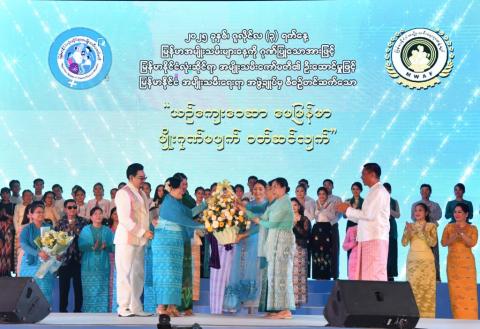
The Costume Show with the title “Polite Myanmar, wearing traditional costumes” in conjunction with the music concert, took place at Thiri Yadana Hall of the head office of the Myanmar Women’s Affairs Federation in Dekkhinathiri Township of Nay Pyi Taw yesterday afternoon, attended by MWAF Honorary Patron Daw Kyu Kyu Hla, wife of the State Administration Council Chairman and Prime Minister.
The Costume Show with the title “Polite Myanmar, wearing traditional costumes” in conjunction with the music concert, took place at Thiri Yadana Hall of the head office of the Myanmar Women’s Affairs Federation in Dekkhinathiri Township of Nay Pyi Taw yesterday afternoon, attended by MWAF Honorary Patron Daw Kyu Kyu Hla, wife of the State Administration Council Chairman and Prime Minister.
The costume show and concert were organized by the Myanmar National Women’s Committee and arranged by the MWAF as a gesture of hailing the Myanmar Women’s Day, which falls on 3 July 2025.
At the ceremony, renowned vocalists presented songs and one-act plays with modern attire created by famous designers, honouring the Myanmar Women’s Day.
Honorary Patron of MWAF Daw Kyu Kyu Hla, and Honorary Patron Daw Khin Thet Htay presented bouquets to the patron, the chair and the vice-chair of MWAF, MWAF Secretary Director Daw Myat Myat Oo, who arranged the costume show and music concert, and multiple Academy Award winners Yan Aung and Soe Myat Thuzar, on behalf of the artistes who participated in the performance.
After the ceremony, MWAF Honorary Patron Daw Kyu Kyu Hla, Honorary Patron Daw Khin Thet Htay and officials cordially greeted artistes.
Also, present at the ceremony were the wife of the SAC Secretary, the wife of the Joint Secretary, SAC members and their wives, the wife of the Chairman of the Constitutional Tribunal of the Union, Union ministers and their wives, the Auditor-General of the Union, the wife of the Union Civil Service Board, the Nay Pyi Taw Council Chairman and his wife, wives of the senior Tatmadaw officers, the wife of the Chairman of Myanmar Economic Holdings Public Co Ltd, the wife of the Nay Pyi Taw Command Commander, judges of the Supreme Court of the Union, female members of the Constitutional Tribunal of the Union, deputy ministers and their wives, the deputy auditor-general, member of the Anti-Corruption Commission, officials, representatives from MWAF and women’s organizations, permanent secretaries, directors-general and artistes. — MNA/TTA
Source: GNLM
The Costume Show with the title “Polite Myanmar, wearing traditional costumes” in conjunction with the music concert, took place at Thiri Yadana Hall of the head office of the Myanmar Women’s Affairs Federation in Dekkhinathiri Township of Nay Pyi Taw yesterday afternoon, attended by MWAF Honorary Patron Daw Kyu Kyu Hla, wife of the State Administration Council Chairman and Prime Minister.
The costume show and concert were organized by the Myanmar National Women’s Committee and arranged by the MWAF as a gesture of hailing the Myanmar Women’s Day, which falls on 3 July 2025.
At the ceremony, renowned vocalists presented songs and one-act plays with modern attire created by famous designers, honouring the Myanmar Women’s Day.
Honorary Patron of MWAF Daw Kyu Kyu Hla, and Honorary Patron Daw Khin Thet Htay presented bouquets to the patron, the chair and the vice-chair of MWAF, MWAF Secretary Director Daw Myat Myat Oo, who arranged the costume show and music concert, and multiple Academy Award winners Yan Aung and Soe Myat Thuzar, on behalf of the artistes who participated in the performance.
After the ceremony, MWAF Honorary Patron Daw Kyu Kyu Hla, Honorary Patron Daw Khin Thet Htay and officials cordially greeted artistes.
Also, present at the ceremony were the wife of the SAC Secretary, the wife of the Joint Secretary, SAC members and their wives, the wife of the Chairman of the Constitutional Tribunal of the Union, Union ministers and their wives, the Auditor-General of the Union, the wife of the Union Civil Service Board, the Nay Pyi Taw Council Chairman and his wife, wives of the senior Tatmadaw officers, the wife of the Chairman of Myanmar Economic Holdings Public Co Ltd, the wife of the Nay Pyi Taw Command Commander, judges of the Supreme Court of the Union, female members of the Constitutional Tribunal of the Union, deputy ministers and their wives, the deputy auditor-general, member of the Anti-Corruption Commission, officials, representatives from MWAF and women’s organizations, permanent secretaries, directors-general and artistes. — MNA/TTA
Source: GNLM

The ancient stones of Rome’s Colosseum witnessed a historic moment as it hosted its first-ever Mevlevi Sema ceremony, bringing Türkiye’s spiritual heritage to the heart of Europe. The event, organized by Turkish Ministry of Culture, was part of the prestigious “Musica in Venere” summer concert series.
The ancient stones of Rome’s Colosseum witnessed a historic moment as it hosted its first-ever Mevlevi Sema ceremony, bringing Türkiye’s spiritual heritage to the heart of Europe. The event, organized by Turkish Ministry of Culture, was part of the prestigious “Musica in Venere” summer concert series.
The ceremony took place at the Temple of Venus and Roma within the Colosseum complex, drawing significant attention from local audiences, with many unable to secure tickets due to high demand. The event showcased Türkiye’s rich cultural and spiritual heritage, featuring both the traditional Whirling Dervishes ceremony and Turkish Sufi music.
mitv
The ancient stones of Rome’s Colosseum witnessed a historic moment as it hosted its first-ever Mevlevi Sema ceremony, bringing Türkiye’s spiritual heritage to the heart of Europe. The event, organized by Turkish Ministry of Culture, was part of the prestigious “Musica in Venere” summer concert series.
The ceremony took place at the Temple of Venus and Roma within the Colosseum complex, drawing significant attention from local audiences, with many unable to secure tickets due to high demand. The event showcased Türkiye’s rich cultural and spiritual heritage, featuring both the traditional Whirling Dervishes ceremony and Turkish Sufi music.
mitv
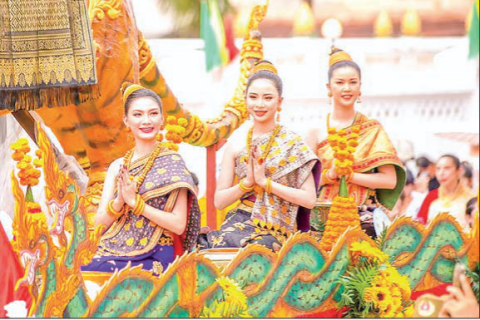
A sustainable tourism exhibition showcasing products from the Greater Mekong Sub-region (GMS) countries, including Laos, Cambodia, China, Myanmar, Thailand, and Vietnam, opened in northern Laos’ Luang Prabang province, alongside the Mekong Tourism Forum.
The exhibition, running from Tuesday to Friday, aims to promote Lao tourism to target visitors from the GMS countries, which are key markets for Laos.
A sustainable tourism exhibition showcasing products from the Greater Mekong Sub-region (GMS) countries, including Laos, Cambodia, China, Myanmar, Thailand, and Vietnam, opened in northern Laos’ Luang Prabang province, alongside the Mekong Tourism Forum.
The exhibition, running from Tuesday to Friday, aims to promote Lao tourism to target visitors from the GMS countries, which are key markets for Laos.
In his speech, Phouthone Dalalom, deputy director general of the Tourism Marketing Department at the Lao Ministry of Information, Culture and Tourism, emphasized that these neighbouring countries are vital sources of tourists for Laos, and the event is expected to attract more visitors.
The fair also seeks to strengthen regional and international tourism cooperation, supporting the industry’s recovery from the impact of the COVID-19 pandemic. The exhibition allows tourism operators to showcase their products, provide tourism information, showcase souvenirs and their unique national cuisine, among others. — Xinhua
Source: GNLM
A sustainable tourism exhibition showcasing products from the Greater Mekong Sub-region (GMS) countries, including Laos, Cambodia, China, Myanmar, Thailand, and Vietnam, opened in northern Laos’ Luang Prabang province, alongside the Mekong Tourism Forum.
The exhibition, running from Tuesday to Friday, aims to promote Lao tourism to target visitors from the GMS countries, which are key markets for Laos.
In his speech, Phouthone Dalalom, deputy director general of the Tourism Marketing Department at the Lao Ministry of Information, Culture and Tourism, emphasized that these neighbouring countries are vital sources of tourists for Laos, and the event is expected to attract more visitors.
The fair also seeks to strengthen regional and international tourism cooperation, supporting the industry’s recovery from the impact of the COVID-19 pandemic. The exhibition allows tourism operators to showcase their products, provide tourism information, showcase souvenirs and their unique national cuisine, among others. — Xinhua
Source: GNLM
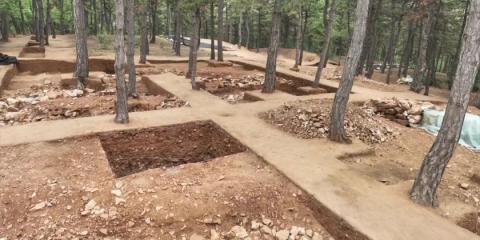
The key artifacts excavated from Niuheliang Archeological Site, the most important archaeological site of China's Hongshan culture in northeast China's Liaoning Province, have proved the establishment of a systemic ritual system for offering sacrifice over 5,000 years ago.
The key artifacts excavated from Niuheliang Archeological Site, the most important archaeological site of China's Hongshan culture in northeast China's Liaoning Province, have proved the establishment of a systemic ritual system for offering sacrifice over 5,000 years ago.
The findings were released jointly by China Academy of Social Science (CASS) and Liaoning Provincial Cultural Relics Bureau on June 14. The released findings included burned artifacts and ceremonial objects, evidence that proves the existence of rituals similar to those documented in later historic periods and used in offering sacrifice to heaven and ancestors.
mitv
The key artifacts excavated from Niuheliang Archeological Site, the most important archaeological site of China's Hongshan culture in northeast China's Liaoning Province, have proved the establishment of a systemic ritual system for offering sacrifice over 5,000 years ago.
The findings were released jointly by China Academy of Social Science (CASS) and Liaoning Provincial Cultural Relics Bureau on June 14. The released findings included burned artifacts and ceremonial objects, evidence that proves the existence of rituals similar to those documented in later historic periods and used in offering sacrifice to heaven and ancestors.
mitv
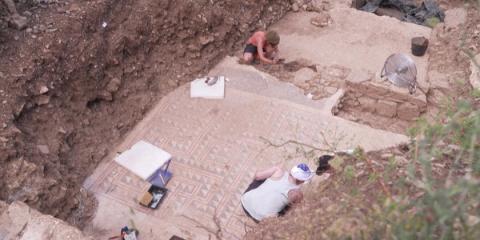
Archaeologists in southern France have uncovered a remarkably well-preserved mosaic over 2,000 years old.
Found in the hills of Ales in the Gard region, the piece stands out for its vivid colours made from rare and costly pigments. Experts believe the discovery may be unique in the Roman world due to the mosaic's painted details.
mitv
Archaeologists in southern France have uncovered a remarkably well-preserved mosaic over 2,000 years old.
Found in the hills of Ales in the Gard region, the piece stands out for its vivid colours made from rare and costly pigments. Experts believe the discovery may be unique in the Roman world due to the mosaic's painted details.
mitv
Archaeologists in southern France have uncovered a remarkably well-preserved mosaic over 2,000 years old.
Found in the hills of Ales in the Gard region, the piece stands out for its vivid colours made from rare and costly pigments. Experts believe the discovery may be unique in the Roman world due to the mosaic's painted details.
mitv

